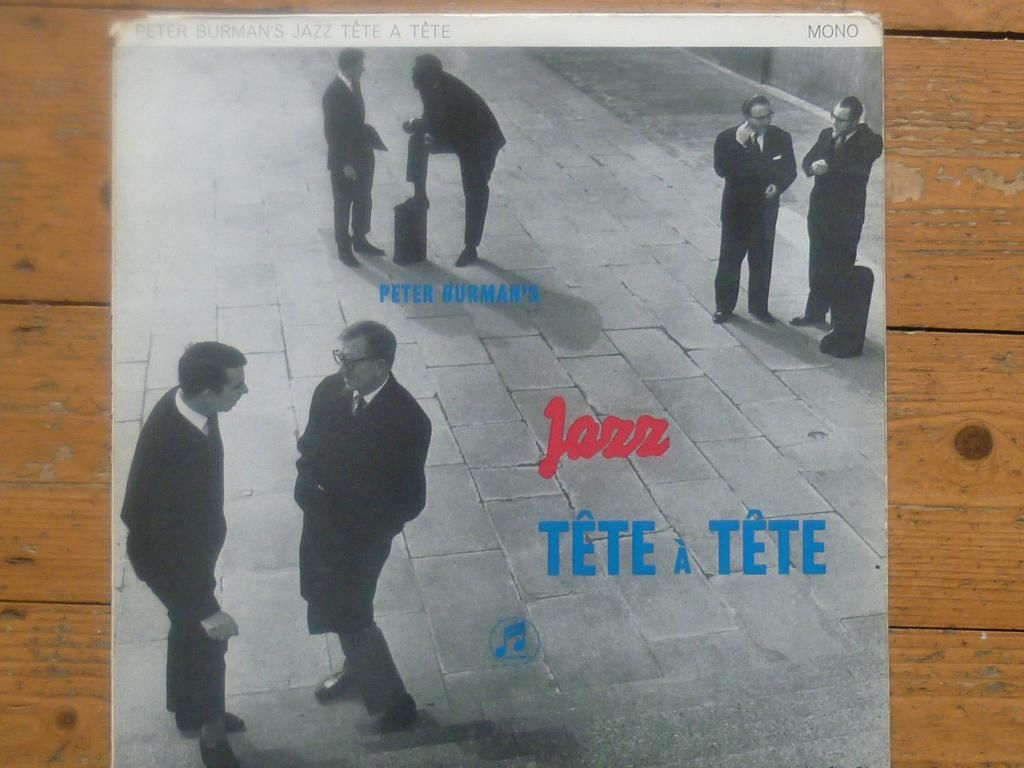This record is a Britjazz obscurity. Recorded in 1962 it reveals British jazz trying to find a distinctive British (as opposed to American) voice. The role and influence of America on the jazz music of the rest of the world is a hotly debated issue. Here we get a glimpse of some of the leading jazz musicians in Britain in the early sixties attempting to pull away from the enormous influence of American jazz and create a new indigenous kind of jazz music.
Peter Burman ran a nightclub in 1960s London called the El Toro and was also involved in the National Jazz Federation. Many well known British jazz musicians played the El Toro and Burman used it as a place to identify and promote (in all meanings of the word) musicians who he felt had promise. Thus he brought to the attention of the BBC some of the leading jazz bands of the period. Bands he recommended would be auditioned by the BBC and, if they passed, were given the opportunity to appear on the radio.
This led to Burman organising concerts, which he called Jazz Tete a Tete's, in the Recital Room at the Royal Festival Hall. These concerts were broadcast on the BBC's Jazz Club.
Although none of the broadcasts survive Burman, with the help of the ubiquitous Denis Preston, managed to get some of the musicians to record in Preston's Lansdowne Studios. This record is the result of these sessions.
If I'm honest what first drew me to this LP was the presence of Shake Keane. Keane had already recorded some of the most adventurous avant garde jazz ever committed to vinyl with Joe Harriott. The Joe Harriott Quintet released the seminal Free Form in 1960 and Abstract in 1962. When Keane recorded the tracks on this record in January 1962 the Harriott Quintet were half way through recording Abstract.
Of course, Harriott's free form experiments were utterly original and owed little to America. However, they were also not taken up by the British jazz scene. Indeed many British jazz musicians were openly scornful and mocking of the Quintet's music.
There is none of this experimentation in Keane's playing here. Instead he supports the Pat Smythe Trio. Smythe was also a member of the Harriott Quintet. In his way he was as important to the Harriott sound as was Keane. According to Coleridge Goode it was Smythe's harmonic subtlety and range of musical knowledge that made free form music a real possibility.
Keane and Smythe both had knowledge of classical music and, perhaps not surprisingly for music that originated in one of London's most prestigious concert venues, the music they produce here is very much influenced by the mix of jazz and classical music that came to be known as the 'third stream'. I think given Keane's other appearances on experimental third stream recordings, most notably David Mack's New Directions, this is hardly surprising.
However, of all the recordings on this record the Smythe Trios are perhaps the most 'jazz'. Of the three tracks, two are from recognised jazz greats, Miles David and Max Roach, albeit in radically different forms, while the third is the standard, Ole Devil Moon.
For me these tracks are the highlight of the record. however, they are not at all the most ambitious.
Johnny Scott, in 1962, was the leader of a quintet and had been playing jazz for a number of years. He would later move into studio work for movie scores which in turn led him into cinema composing where he has scored music for movies such as The Shooting Party and Greystoke. He has also scored classical pieces, played in classical orchestras and even conducted.
His contribution to this record is a Suite in Three Movements. I can hear definite elements of cinematic music in each movement and although his music definitely has a foundation in jazz, it is obviously pulling in a completely different direction from Harriott's free form experiments.
Although the sleeve notes compare these pieces by Scott to the American third stream I would suggest that they rather represent a more British approach to the fusion of jazz and classical music. I find his flute playing and the percussion to be very evocative of Benjamin Britten.
Ray Premru's group consisted of some great British jazzmen. Kenny Clare, Bob Efford, Kenny Napper and Eddie Blair. Unfortunately their contribution is the least interesting on the record, perhaps because it is the least experimental.
Despite also leaning heavily on classical conventions it is rather stale music that never manages to lift itself above or beyond its conventions.
Finally, the record closes with some marvellous music from Alan Clare. Again owing rather a lot to classical music, in this case Debussy, Clare's music is truly sublime. I think its his playing, his tone and phrasing, that really give his contributions such depth and beauty. It is a shame he did not record more!
He is ably assisted by Lennie Bush on drums, Dave Goldberg on guitar and Bob Burns on soprano sax. Their playing is very restrained putting Clare's playing at the forefront.
Of all the music on this record, Clare's is the most difficult to pigeon-hole. Is it jazz, or classical, or something else entirely? Its certainly very beautiful and unique.
Overall, this record is not a lost masterpiece. At best if provides a snapshot of a moment in the development of British jaz as it stuggled to find its identity. If you come across it, pick it up. Its an interesting listen.

Thanks for that, especially the Johnny Scott
ReplyDeleteI'd also love to hear more of the Pat Smythe from this album - any chance of some more clips?
RD
Very belatedly here is a link to the music:
ReplyDeletehttp://www.divshare.com/download/23782289-1ca
http://www.divshare.com/direct/23782289-1ca.zip